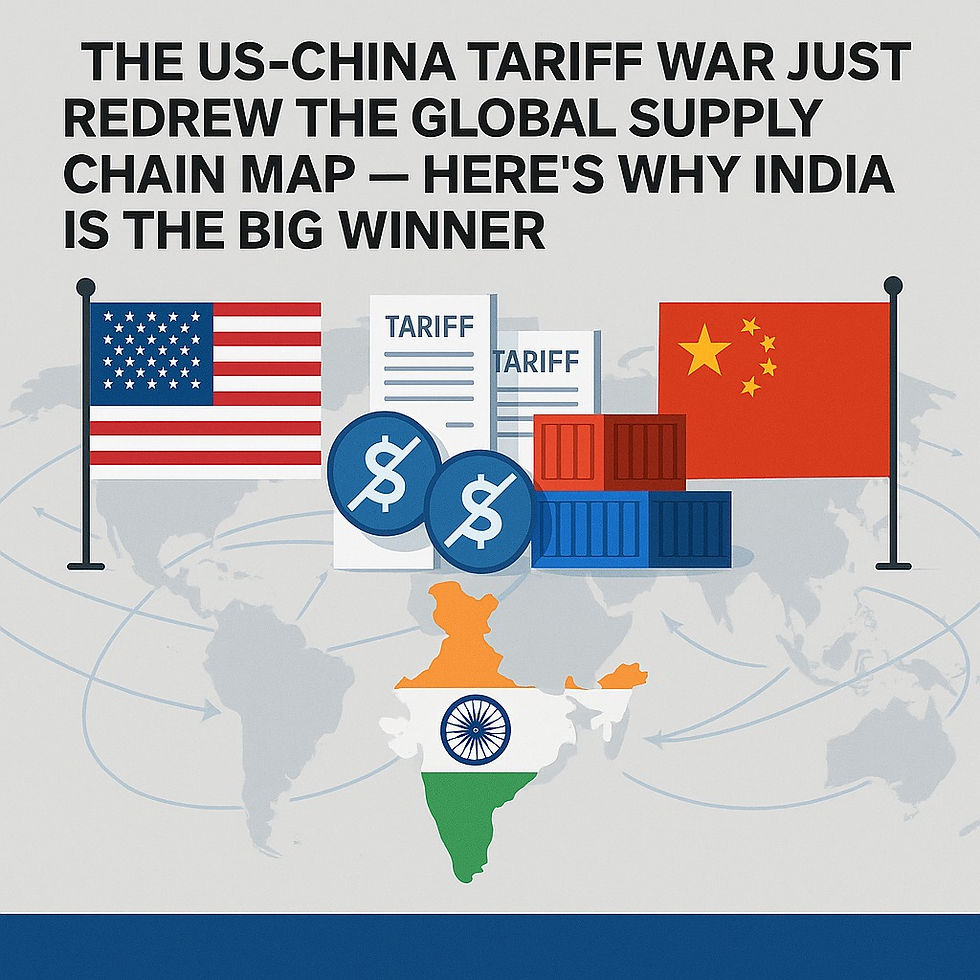🚨 The US-China Tariff War Just Redrew the Global Supply Chain Map: Why India Is the Big Winner
- Vivek Harsora
- Jun 4
- 2 min read
The global sourcing landscape is shifting rapidly, and May 2025 may go down as a turning point. The UK signed a strategic trade pact with the United States, signaling a clear departure from past trade alignments. This agreement didn’t just raise eyebrows in Beijing—it triggered a wave of retaliation and redirection that’s now reshaping the global economy.
🌐 A Strategic Shift in Trade Dynamics
The new trade pact included:
Mandatory supply chain transparency
Restrictions on Chinese ownership
Stronger compliance around origin sourcing
In response, China introduced retaliatory tariffs and placed investment roadblocks, accusing the US of embedding “poison pill clauses” designed to isolate Chinese interests.
At the same time, legal pushbacks in the US questioned the reach of executive power in trade decisions, further fueling global uncertainty.
But amidst this turbulence, one clear signal has emerged:
The world is actively de-risking from China, and India is emerging as the alternative.
📈 India’s Rapid Rise: From Backup to Strategic Hub
India has been preparing for this moment. Over the last year alone:
💰 $395.63 billion in merchandise exports
📱 26.4% growth in electronics exports
🏭 Foxconn and Tata are expanding manufacturing bases
☀️ Solar module capacity expected to hit 100 GW by 2026
👷♂️ Median age: 28.4 (vs China’s 38.4)
💵 Labor costs: 30–40% lower than China’s coastal hubs
This is not just momentum—it’s a manufacturing transformation. India is no longer “just in case.” It’s becoming “just the place.”
💡 What Should Global Buyers Do Now?
If you're managing global supply chains or procurement, these are the key moves to consider:
1. Adopt a Smart “China+1” Strategy
Continue sourcing non-critical components from China while tariffs remain relaxed.
Diversify critical manufacturing and components to India for long-term risk control.
2. Use Trade Deals to Your Advantage
Structure sourcing strategies that meet Indian origin thresholds (typically 60–65%) to qualify for tariff exemptions under new trade pacts.
3. Invest in Resilient Supply Chains
India is offering $1.3B in tax incentives for logistics infrastructure.
Focus on port development, cold chain logistics, and last-mile warehousing to future-proof your supply chain.
🧭 Looking Ahead: A New Global Order
This isn’t just a temporary tariff dispute. It’s the beginning of a strategic decoupling that will define the next decade of international trade.
India is positioning itself as the center of gravity in a multipolar manufacturing world.
Those who adapt now will rethink their sourcing strategies, diversify their supplier networks, and leverage trade shifts to lead in the new era. Those who don’t? They risk falling behind as the old supply chain models fade.
💬 Final Thought
Is your sourcing strategy aligned with this global shift? At V Global, we help buyers stay agile, informed, and ready to capitalize on India’s rising manufacturing power.
📩 Let’s connect and explore what a resilient, India-first strategy could look like for your business.





Comments